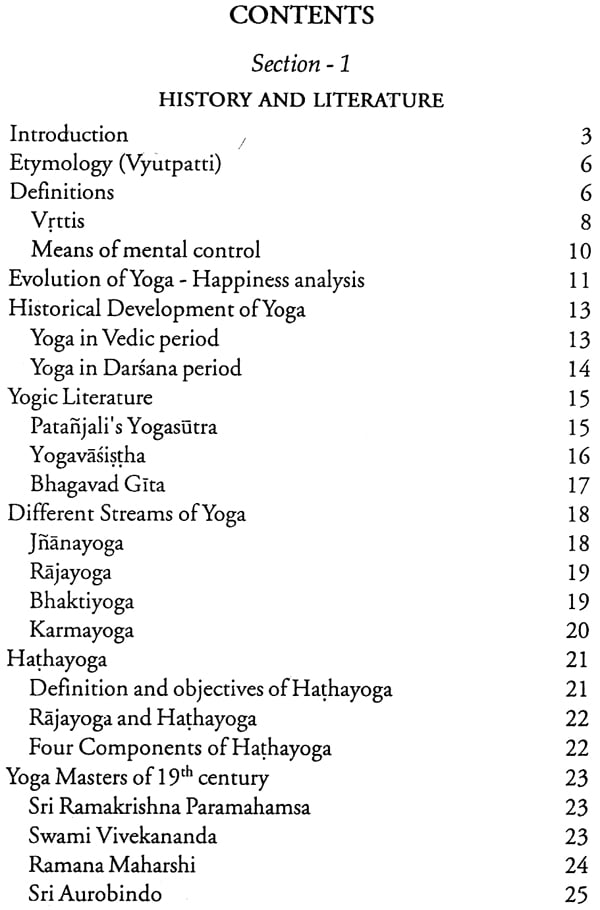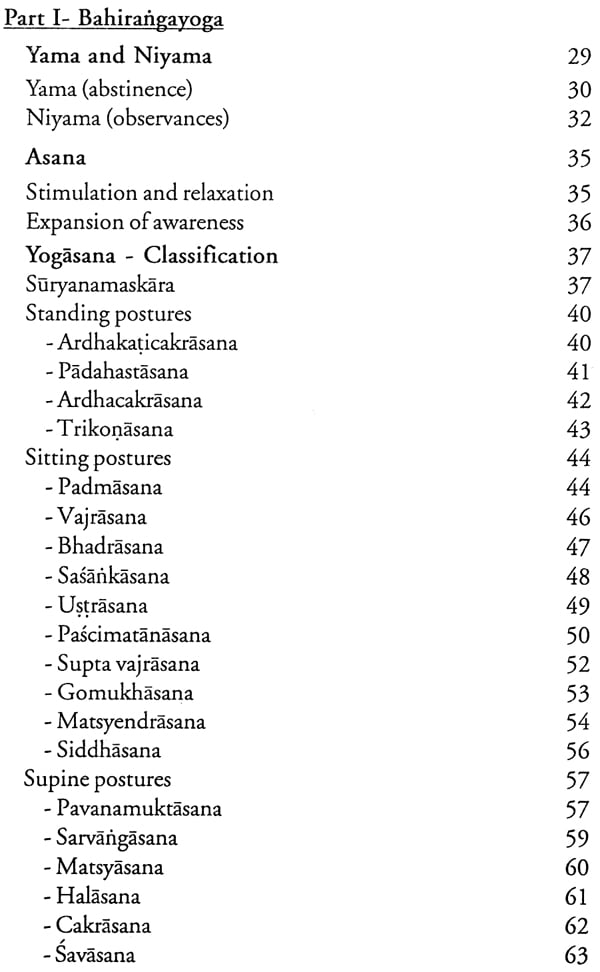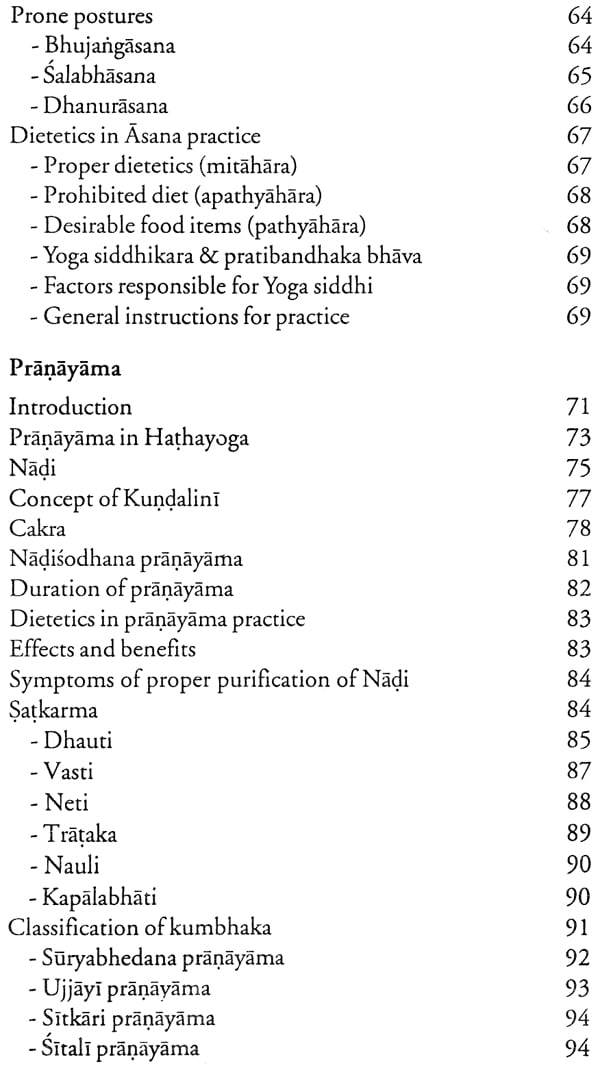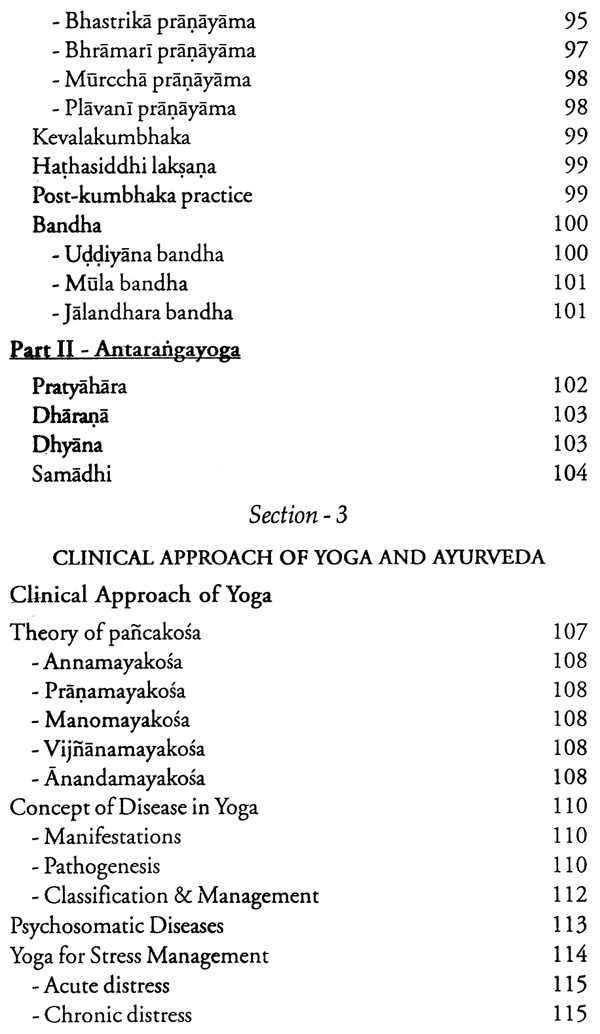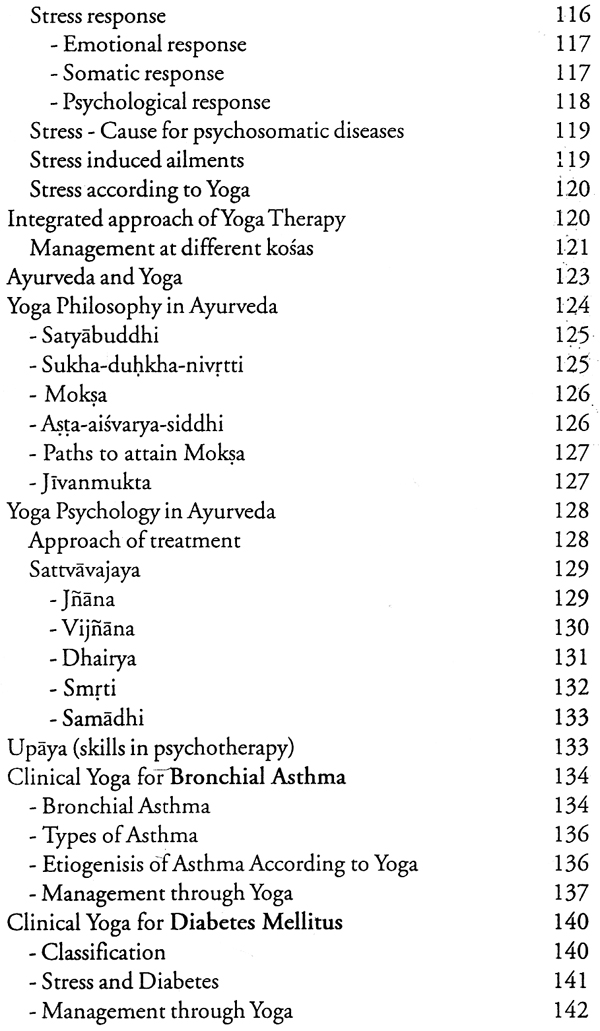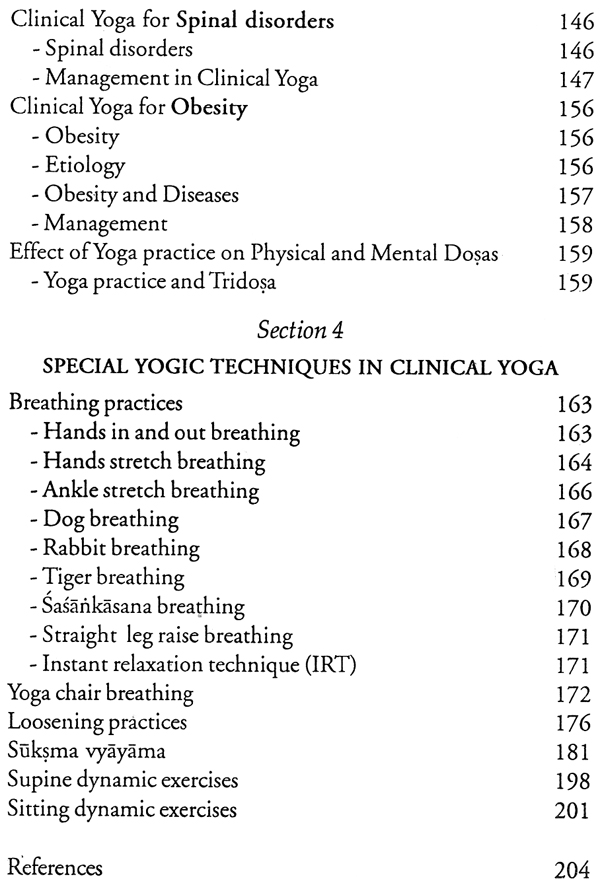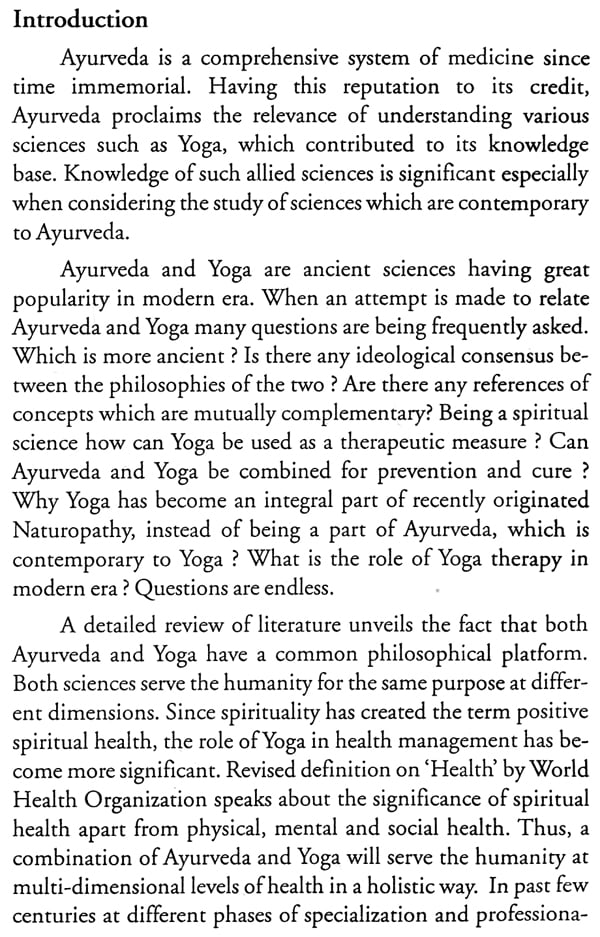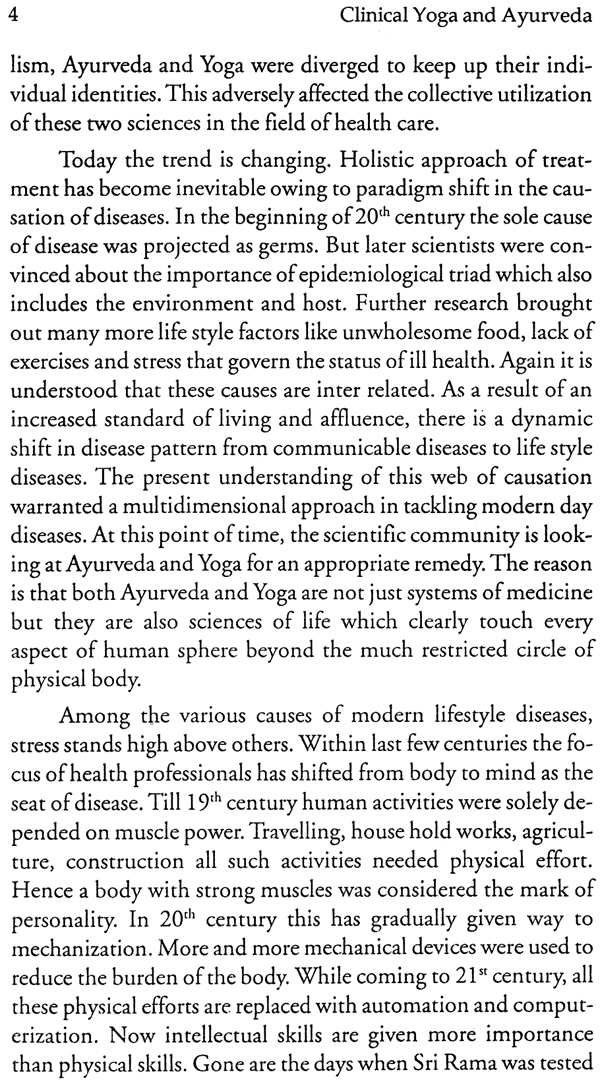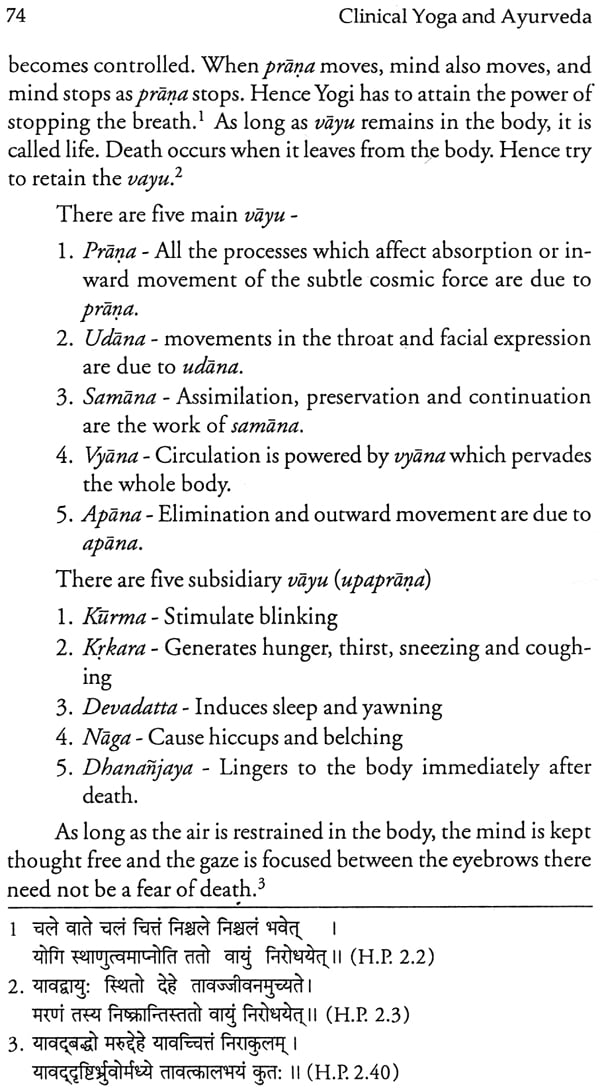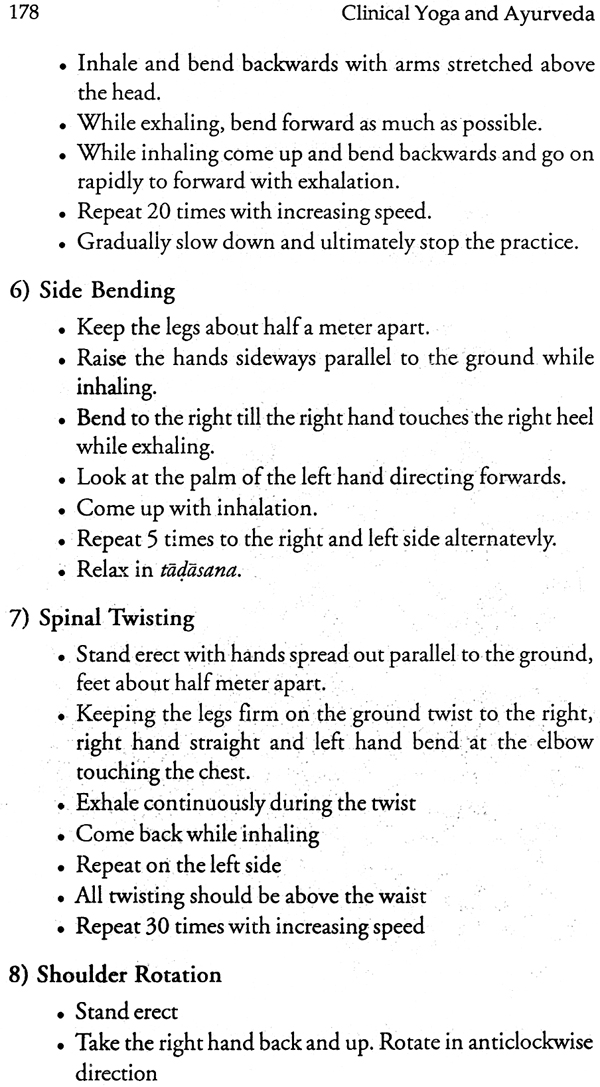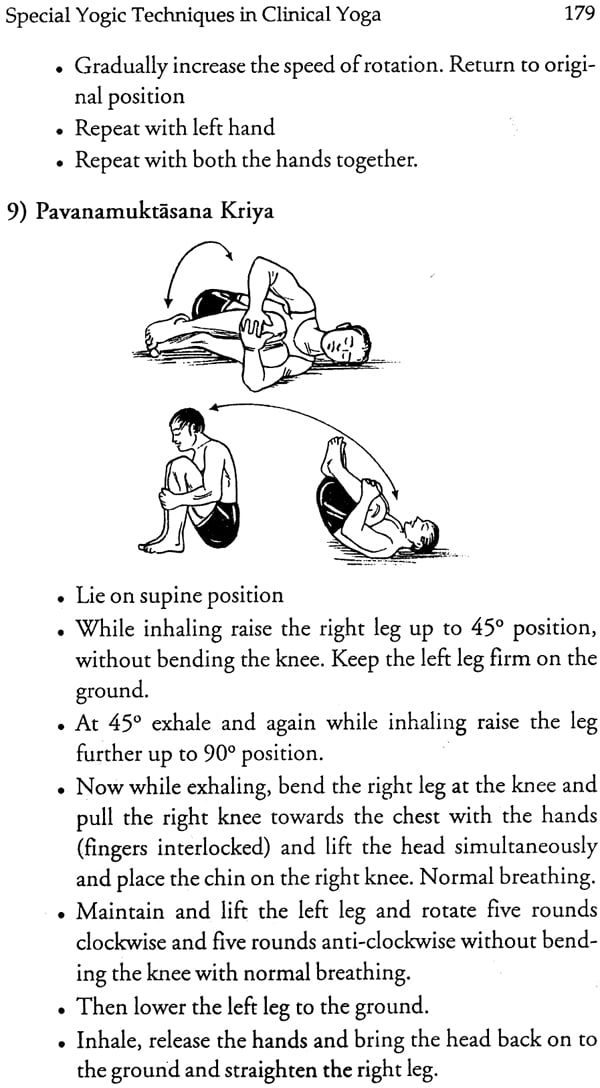About The Author Dr. K.V. Dilipkumar had his graduation in Ayurveda from Vaidyarat-1 PS. Varier Ayurveda College Kottakkal, Kerala in 1983 and his Post Graduation from Govt. Ayurveda College, Bangalore in 1957 lie received advanced training in Yoga from Morarji Desai National Institute, New Delhi and Swami Vivekananda Yoga Anusandhan Samsthan (SVYASA) Bangalore. He joined his alma mater as a tutor in the Dept. of Swasthavritta in 1991. He is one of the founder members of Clinical Research Institute for Yoga and Ayurveda (CYA) at V.PS.V. Ayurveda College Kottakkal and served the same as Project Officer from 1998-2008. Currently he is serving as the Professor and Head of the Post-graduate Dept. of Swastavritta and the Director of the CRIYA, V.P.S.V, Ayurveda College Kottakkal. He is also the Dean of the Faculty of Ayurveda University of Calicut and member of the faculty University of Kannur and is also a member of Board of Studies, University of Kannur and University of Kerala. Being interested in integrating the benefits of Yoga in Ayurvedic clinical practice he has extensively studied the utility of Yoga in Diabetes mellitus, Asthma, Mental disorders ad Spinal disorders. He had published two books "Mahayoga" and Naam Nammude Doctor"in Malayalam and served as Chief Editor of Ayurvedic Perspective of Communicable Diseases. Professor Dilipkumar had opportunity to visit Russia frequently to deliver lectures on Yoga and Ayurveda. Currently he is interested in developing and integrating the Indian Psychological Wisdom of Yoga in day to day clinical practice.
Foreword Dr. K.V. Dilipkumar M.D. (Ay.) Professor, Department of Swasthavritta, V.P.S.V. Ayurveda College, Kottakkal was my student, colleague and friend in the college and is devoted to the development of the science of clinical yoga for the past three decades. His vision and untiring dedicated work has prompted him to be instrumental for the establishment of the Clinical Research Institute for Yoga and Ayurveda (CRIYA) as an independent unit under the College, which has proved its mettle in the right direction of scientific clinical yoga. He was with me to propagate Ayurveda in Moscow, Russia and he was also able to impart the right light of Yoga to the enthusiasts of Indian systems there. Yoga as we all know is a system of orthodox Indian philosophy. It is not a clinical discipline. But for sure, it has a clinical edge. According to Ayurveda, one of the two substrates of disease is the mind, the other being the body. Hence for a practitioner of medicine, a deep insight of mind and its function is mandatory. The three fold Ayurvedic treatment involves a prominent sector of mental control. By definition, Yoga is mental control as it attempts to eradicate mental activities and keep the mind in its most natural, clear and pure form. In this perspective Yoga is highly relevant in Ayurveda. The Government of India has included Yoga as a System of Medicine and the acronym for the Department of Indian Systems of Medicine is now AYUSH, the ‘Y’ in it representing Yoga. Dr. Dilipkumar was always toiling to aptly incorporate Yoga in Ayurvedic treatment in a very scientific way, without distorting the principles of both the systems. By this attempt he has proved to us, the skeptics of his methods, that there could be healthy collaboration of the two systems for better results for the humanity. He was always keen to keep the system very secular, so that people could benefit from Clinical Yoga without religious barriers. Dr. Dilipkumar is not a novice in the art of scientific writing. He has already published a series of monographs on Yoga in various diseases. He has formulated various package programs in diseases like diabetes, asthma and backache and has ingeniously and judiciously incorporated Yoga practices with Ayurvedic treatment. But this is a more serious work and is destined to become his magnum opus as it is the outcome of his ripe knowledge and practical experience. This book is written closely adhering to the latest B.A.M.S. syllabus and hence is a text book of Yoga for Ayurvedic students. Such a book in English was a long cherished wish of the Ayurvedic community especially the students of Ayurveda and will be a boon to them. The book will be also useful for the postgraduate students of Ayurveda. I am not going into the details of the book. One thing is sure; this book contains whatever is required in Yoga for the students of Ayurveda. Dr. Dilipkumar is a versatile teacher as he has always tried to perfect himself in his profession and is successful in inspiring the students in the discipline that he teaches. Here is the book in your hands and you can very well verify its merits and defects. I feel that I am really honored by being permitted to introduce this book which I am sure is going to be a boon to the Ayurvedic community. I proudly introduce this book to all those who are interested in Ayurveda and Yoga and earnestly pray that the Ayurvedic community shall accept it and take the message of the book to their heart. The book is also a blessing to those who are interested in the miracles of Yoga and want to unravel its mystery in a scientific manner without ambiguity.
Preface Ayurveda is a system of medicine that needs to be understood both at gross and subtle dimensions. One side comprises of objective and material being and the other side includes more subtle sense faculties, mind, intellect, ego and soul. These aspects are relevant during the understanding of etiology; pathogenesis, manifestation and management of diseases. Ayurveda is considered as a holistic system of medicine because of its multidimensional approach. The subtle dimensions of Ayurveda are explained and managed by the principles and practices of Yoga. With a vision to rejuvenate these holistic concepts of Ayurveda, we have started an Institute named Clinical Research Institute for Yoga and Ayurveda (CRIYA) at Vaidyaratnam P.S.Varier Ayurveda College, Kottakkal in 1998. Thousands of people have already tasted the fruits of judicious combination of Yoga and Ayurveda in alleviating a number of diseases. This encouraging experience inspired me to write a book on Clinical Yoga for the students and practitioners of Ayurveda. I had an opportunity to be a member of the committee constituted by C.CJ.M to revise the Syllabus of Swasthavritha for B.A.M.S. and M.D courses. I was also a member of the committee constituted to formulate a new syllabus for Post graduate Diploma in Swasthavritha and Yoga. During the discussions, the committee has observed the lack of practically useful topics in the existing syllabus of Yoga. Hence committee has recommended the inclusion of some topics in the revised syllabus that can be effectively applied in the clinical practice. It has also been observed the need of a new text that includes the new topics. This book is written with an intention to satisfy the needs of graduate and postgraduate students of Ayurveda. I personally consider this as my responsibility to share my 18 years of teaching experience in Swasthavritta with the student community of Ayurveda. The book is written in four sections. First section gives a theoretical basis of Yoga. Second section is meant for the explanation of eight limbed practice of Yoga. In this, Asana and Pranayama are explained elaborately. Third section is dedicated to the principles and practice of Clinical aspects of Yoga. Fourth section comprises the procedures of some yoga practices those are specifically useful in disease conditions. I acknowledge all those who helped me to complete this work to my satisfaction. I express my special thanks to my beloved teacher Dr. C.R. Agnives for inspiring me all through my career and also for the encouraging foreword written on this book. I offer my Pranams to Dr. H.R. Nagendra and Dr. R. Nagaratna for initiating me into the field of Yoga therapy. I extend my gratitude to Dr. M.J. George, Dr. M.V Vinodkumar, Mr. C. Haridasan, Dr. M.C. Sobhana, Dr. S.Vinuraj, Dr. Anoop M.S., Dr. Rahul. R. Nair, Dr. Ramya A. and M.D. Scholars of Dept. of Swasthavritta who have helped me at various levels to complete this work. I am also indebted to Mr. K.V. Mukundan for the lay out and Mr. Bijoy for the illustrations of this book. I am expressing my gratitude to M/S Chaukhamba Sanskrit Pratishthan for having kindly consented to publish this book. I always cherish the moments of inspirations, support and affection from Mini, my wife and Athira and Jeevak, my children.
Introduction Ayurveda is a comprehensive system of medicine since time immemorial. Having this reputation to its credit, Ayurveda proclaims the relevance of understanding various sciences such as Yoga, which contributed to its knowledge base. Knowledge of such allied sciences is significant especially when considering the study of sciences which are contemporary to Ayurveda. Ayurveda and Yoga are ancient sciences having great popularity in modern era. When an attempt is made to relate Ayurveda and Yoga many questions are being frequently asked. ‘Which is more ancient? Is there any ideological consensus between the philosophies 0f the two ? Are there any references of concepts which are mutually complementary? Being a spiritual science how can Yoga be used as a therapeutic measure ? Can Ayurveda and Yoga be combined for prevention and cure ? Why Yoga has become an integral part of recently originated Naturopathy, instead of being a part of Ayurveda, which is contemporary to Yoga ? What is the role of Yoga therapy in modern era ? Questions are endless. A detailed review 0f literature unveils the fact that both Avurveda and Yoga have a common philosophical platform. Both sciences serve the humanity for the same purpose at different dimensions. Since spirituality has created the term positive spiritual health, the role of Yoga in health management has become more significant. Revised definition on ‘Health’ by World Health Organization speaks about the significance of spiritual health apart from physical, mental and social health. Thus, a combination of Ayurveda and Yoga will serve the humanity at multi-dimensional levels of health in a holistic way. In past few centuries at different phases of specialization and professionalism, Ayurveda and Yoga were diverged to keep up their individual identities. This adversely affected the collective utilization of these two sciences in the field of health care. Today the trend is changing. Holistic approach of treatment has become inevitable owing to paradigm shift in the causation of diseases. In the beginning of 20th century the sole cause of disease was projected as germs. But later scientists were convinced about the importance of epidemiological triad which also includes the environment and host. Further research brought out many more life style factors like unwholesome food, lack of exercises and stress that govern the status of ill health. Again it is understood that these causes are inter related. As a result of an increased standard of living and affluence, there is a dynamic shift in disease pattern from communicable diseases to life style diseases. The present understanding of this web of causation warranted a multidimensional approach in tackling modern day diseases. At this point of time, the scientific community is looking at Ayurveda and Yoga for an appropriate remedy. The reason is that both Ayurveda and Yoga are not just systems of medicine but they are also sciences of life which clearly touch every aspect of human sphere beyond the much restricted circle of physical body. Among the various causes of modern lifestyle diseases, stress stands high above others. Within last few centuries the focus of health professionals has shifted from body to mind as the seat of disease. Till 19th century human activities were solely depended on muscle power. Travelling, house hold works, agriculture, construction all such activities needed physical effort. Hence a body with strong muscles was considered the mark of personality In 20th century this has gradually given way to mechanization. More and more mechanical devices were used to reduce the burden of the body. While coming to 21 century, all these physical efforts are replaced with automation and computerization. Now intellectual skills are given more importance than physical skills. Gone are the days when Sri Rama was tested to get qualified as bridegroom by aiming the arrow. Today, University graduation which proves the intellectual qualification counts. Professor Stephen Hawking, the renowned scientist whose body was totally paralyzed but with intact intelligence is rated as one of the most respected personalities. During the transition of focus from body to mind, the approach to the diseases also found dramatic change. Mind is also included along with the body as a base for the disease. Hence the diseases which are previously viewed as purely somatic, has started to be viewed as psychosomatic. The prevalence of psychosomatic diseases is significantly enhanced in recent times. Today, stress generated through the fast life plays the pivotal role in this regard. Hence present generation is keen to preserve mental health more than physical health. Ayurveda has recognized Yoga as the preventive and curative modality which can complement it in managing stress. Yoga is a practical science which can teach us how to control the mind and emotions. Ayurveda recognizes Yoga as its psychotherapy. Yoga helps to minimize rajas and tamas by uplifting the sattva. Similarly Hathayoga works as an effective practice to provide adequate exercise to the body. The most important objective of Yoga is to attain Liberation (moksa) . People are not much attracted to this goal. Only a may prepare to adopt Yoga way of life with an intention to attain Liberation (moksa). Rather some materialists contradict yoga by blaming it as a Moksasastra. In fact many of our activities to develop personality are truly evolving us towards moksa. Knowingly or unknowingly we are adopting Jnana yoga in the form of education, Karmayoga by training skills, Bhaktiyoga by worshiping and Rajayoga by learning mental control. Various practices of Yoga can certainly make changes in an individual at physical, mental, emotional and intellectual levels. Such changes will minimize the animal instincts and maximize the humane qualities. Ayurveda describes the 16 gradation of personalities under the heading of sattva’ ranging from Brahmasattva to Vinaspatyasattva. Yoga practices offer the transformation of lower sattva to a higher sattva. When it reaches the highest, it is termed as moksa, in this context Brahmasattva. Thus, systematic practice of Yoga can transform a personality into further heights i.e., super man, great man and divine man. According to Caraka the very purpose of human existence is to attain the highest goal called the moksa by abiding the path of dharma and by achieving artha and kama.
**Contents and Sample Pages**
